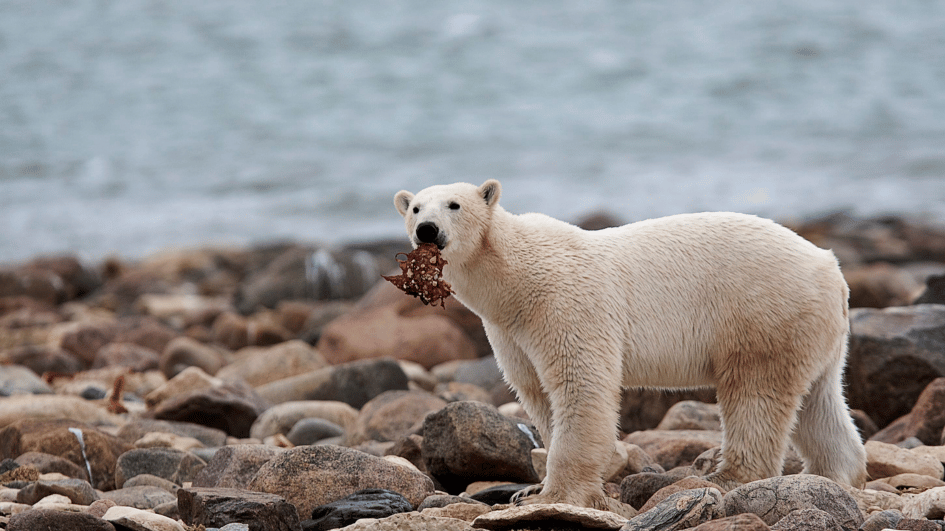
Polar bears in Canada's Hudson Bay risk starvation as climate change lengthens periods without Arctic Sea ice, despite the creatures' willingness to expand their diets.
Polar bears use the ice that stretches across the ocean surface in the Arctic during colder months to help them access their main source of prey, fatty ringed and bearded seals.
In the warmer months when the sea ice recedes, they would be expected to conserve their energy and even enter a hibernation-like state.
However, human caused climate change is extending this ice-free period in parts of the Arctic and forcing the polar bears to spend more and more time on land.
New research looking at 20 polar bears in Hudson Bay suggests that without sea ice they still try to find food.
"Polar bears are creative, they will search the landscape for ways to try to survive and find food resources to compensate their energy demands if they're motivated," Anthony Pango, a research wildlife biologist with the US Geological Survey, told AFP.
The research, published in the journal Nature Communications, used video camera GPS collars to track the polar bears for three-week periods over the course of three years in the bay.
The researchers found that of the group, two bears rested and reduced their total energy expenditure to levels similar to hibernation, but the 18 others stayed active.
The study said these active bears may have been pushed to continue to look for food and were documented eating a variety of foods including grasses, berries, and seal carcass.
But ultimately the researchers found that the bears' efforts to find sustenance on land did not provide them with enough calories to match their normal marine mammal prey.
Limiting planet-warming greenhouse gases and keeping global warming under the Paris deal target of 1.5 degrees Celsius above pre-industrial levels would likely preserve the endangered polar bear populations, experts say. However, global temperatures continue to rise and sea ice dwindles.